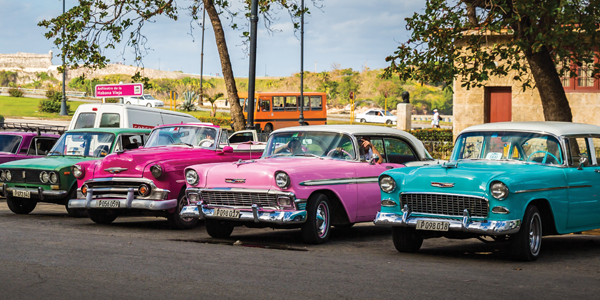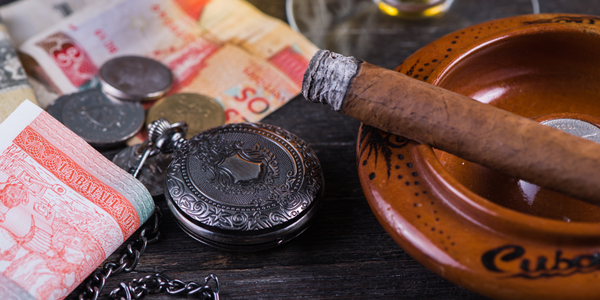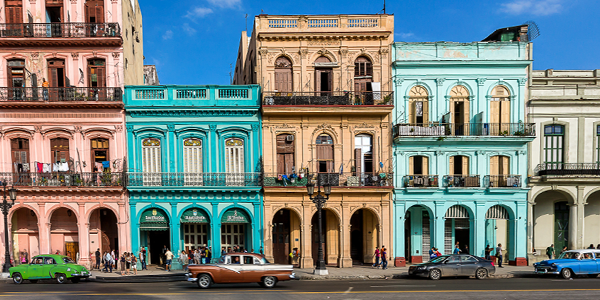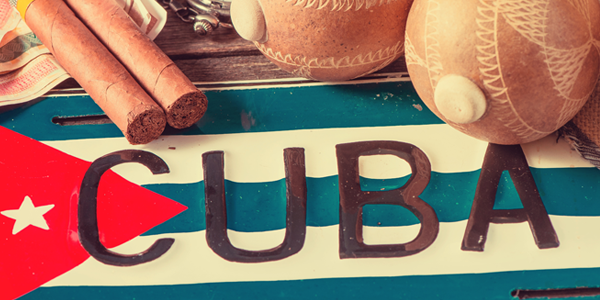Classic Cars in Cuba: What You'll See on Your Trip
If you need a clear example of Cuba as the country that time has left behind, it is the number of “classic” American cars still on the streets of Havana. It’s been described as a rolling car museum, but it’s also a symbol of economic inertia and human resiliency and ingenuity. I mean, how can you keep a 1956 Chevy Bel Air running when there is no trade with the land in which spare parts reside? The US embargo, plus a decades-long ban (discontinued in 2013) on the importation of foreign vehicles to the island, has left a veritable fleet of sea foam and two-tone paint jobs turning corners into old Havana and rolling down the Malecón, Havana’s seaside promenade.
To keep vintage Chevrolets, Chryslers, Buicks and Oldsmobiles running, Cubans have to be very clever in how they create fixes for broken parts that can’t be replaced. Instead of ordering a bumper from an auto parts store, skillful Cubans build new ones out of scrap. Most of the cars are from between the 1930s and 1950s. They are affectionately known as cacharros, translating roughly into ‘junkers’ or ‘jalopies.’ It’s estimated the island has close to 60,000 cacharros.
In January of 2016, Ray Magliozzi, one of the longtime hosts of the radio show Car Talk on National Public Radio, took his reporting team to Cuba. In an interview with NPR’s Robert Siegel, Magliozzi was asked, “First, what exactly are you doing in Havana?”
MAGLIOZZI: Besides drinking mojitos, having Cuban coffee...
SIEGEL: Apart from the Cohibas, mojitos and drinking the mojitos and looking at the cars...
MAGLIOZZI: Robert, we're being journalists for goodness sakes, and we're trying to ascertain how these cars stay on the roads.
SIEGEL: So tell me. As I observed, you probably saw some exceptional cars driving around in Havana. What do you think? What is this - does it make you feel young again?
MAGLIOZZI: Well, exactly that. I mean, I obviously haven't seen cars of this vintage since I was a little kid.
SIEGEL: What do you think about the maintenance of these cars - think you could have kept as many of these cars on the road as you see in Havana?
MAGLIOZZI: No. I've been constantly impressed by the cleverness and the sheer determination of the people who keep these cars going. It's amazing. So lots of the cars that we've taken as taxis, for example, do not have the original engines. But, you know, it's funny. Stuff I read about Cuba before I came suggested that it didn't really make much a difference how they put these cars together because most of the roads were dirt roads. Nobody went over 20 miles an hour, and the cars were just a curiosity and a conveyance that was not to be relied upon. However, that couldn't be farther from the truth. These cars, you know, driving 50, 60 miles an hour (laughter). I was very happy that they put as much effort into maintaining the brakes on these cars as they had the engines and the transmissions because, you know, with no seatbelts and metal dashboards, it could be over in an instant (laughter)...*
The roads in Cuba are not good, but they’re not bad for an underdeveloped nation. The potholes are huge, but the paved roads generally remain very passable given most of them have not been repaved for decades. The salt air that can affect paint jobs has little impact on asphalt. Havana is often plagued by a haze of diesel fumes. That’s the product of many of the cars having no pollution controls on them, but also the result of many of the old cars having their fuel systems converted to diesel engines as diesel costs about half the price of gasoline. Some of the diesel engines are newer Hyundai ones, but many come from old Russian cars, trucks boats and generators. Entire shops are dedicated to this conversion to diesel. The practice continues as the Russian cars the island imports are found to be less reliable than the cacharros. You can’t help but admire the skill and ingenuity of the Cubans who keep these jalopies on the road.
On the outside, from a distance, the old American cars might look like museum pieces, but up close, the flaws are significant. Many of the panels no longer sit straight, the result of repairs being done with body filler and hammers. Many panels are completely rebuilt by hand. There are curvy waves in many of the cars’ contours as a result. The cars that have their original parts and have been kept in good shape are largely used for the tourist industry, giving rides to visitors.
Today, about 30 percent of the cars in Cuba are Russian Ladas. The design is a rip-off of the Fiat 124. Buying a new car is unaffordable for the vast majority of Cubans. So, they continue to fix the old ones. Of the American cars, you’ll be surprised to see so many old Buicks. That, as I was told, is because in the pre-Castro days, wealthy American tourists expected to be carted around in luxury and Buick was the luxury brand in the 1950s. To say the least, those were different times for Buick and for Cuba.






